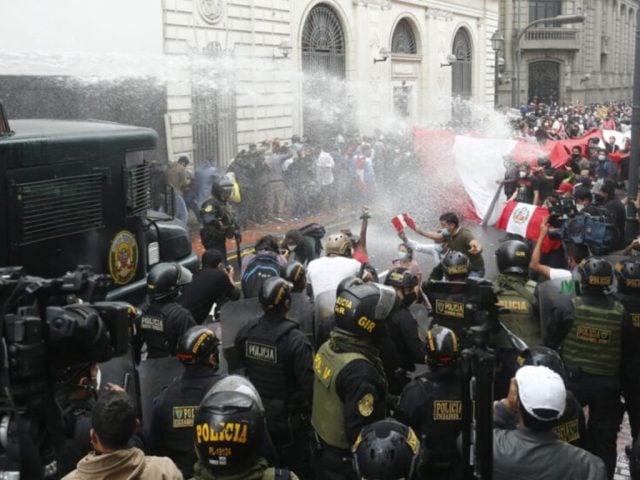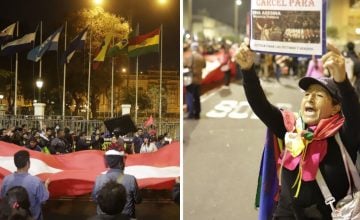Original article: La extorsión se pasea por Perú: 85 mil denuncias y solo 20 sentencias en 19 meses
In Peru, extortion has erupted into a crime with nearly guaranteed impunity, as between January 2024 and July 2025, only 20 cases received sentencing nationwide, despite over 85,000 complaints registered since 2020.
According to a report by the Peruvian television program Punto Final, more than 98% of extortion cases end up being archived or unresolved, leaving organized crime unpunished.
The scale of the issue is reflected not just in statistics but in everyday reality. Lima, Callao, and La Libertad are hotbeds for attacks, kidnappings, and threats against merchants, transporters, and residents. The situation has escalated to levels where, as reported by the National Observatory of Citizen Security of the Ministry of the Interior, by October 2025, there were 23,213 extortion complaints filed, significantly higher than the 18,215 reported for all of 2024. This translates to a complaint every 19 minutes, or about 76 daily nationwide.
The Observatory’s report revealed that the region with the most recorded complaints is Metropolitan Lima, which accounts for a total of 9,750 cases, making up over 30% of the national total. Following closely is La Libertad, with 3,789 complaints registered by October 31, 2025, a situation exacerbated by the high presence of criminals in the provinces of Trujillo and Pataz, both of which have been declared in a state of emergency since 2023 and continue to face this measure.
Judicial System Stalled
The Peruvian judicial system is failing to process the flood of complaints. According to figures obtained, only 1,470 cases reached the judiciary between 2020 and 2025. For instance, in the port city of Callao, no recently filed extortion complaints have resulted in a sentencing.
«Of 85,000 complaints, barely 20 ended in convictions. This reflects the lack of technical and investigative capacity within the system,» explained security expert Julio Corcuera in comments to Caretas.
The situation is particularly critical for the Organized Crime Prosecutor’s Offices, where prosecutors face an overwhelming backlog of digital evidence that makes it exceedingly difficult to complete their analyses.
«We have only processed information from 294 cell phones, while over 1,100 remain to be reviewed. We lack the necessary technology,» warned Senior Prosecutor Jorge Chávez Cotrina.
Outdated Technology
The delays in investigations are a result of inadequate technological tools. «Most cases hinge on the analysis of seized phones, but the country has fewer than five Cellebrite devices—specialized tools for extracting data from cell phones, including deleted content—across the national territory,» stated Caretas.
This lack of equipment means that forensic analysts take months or even a year to complete the review of a single seized phone, a timeframe during which prosecutors’ cases stagnate and criminal gangs continue their operations.
At the end of October 2024, Prosecutor Chávez Cotrina reported to the Congress of Peru: «We do not have technology to read seized cell phones, where the extortion messages exist. How can we combat organized crime if we lack the necessary instruments?» he questioned.
He pointed out that both the Prosecutor’s Office and the National Police lack personnel and technology, this ‘lack’ hinders essential investigations in the fight against crime. According to the prosecutor, the shortage of personnel and absence of forensic laboratories affect the police’s ability to process evidence effectively.
«When organized crime offenders are arrested, they often possess dozens of cell phones containing evidence. However, we do not have the necessary resources to analyze them and glean the evidence,» he accused.
Impunity and Fear to Report
According to the National Police of Peru (PNP), there are currently 1,389 individuals incarcerated for extortion offenses, although most cases pertain to older processes or lack definitive sentencing. Due to high levels of impunity, victims prefer not to report for fear of reprisals or because they distrust the authorities.
In regions such as La Libertad, Piura, and Lambayeque, the collection of “security fees” from transporters and small business owners by extortion gangs has become normalized.
Criminals send threatening messages or videos from prisons, coordinating their operations thanks to corruption and a lack of oversight in these facilities.
According to figures from the National Confederation of Markets and Commerce in Peru (Confenatm), 50% of markets are victims of extortion by mafias demanding payments for “protection.” Most involve small retailers who report receiving threats, illegal charges, and attacks against their establishments.
In Lima and Callao, the most severe cases occur in the districts of San Juan de Lurigancho, Ate, San Martín de Porres, Villa María del Triunfo, and Puente Piedra, which remain under a state of emergency. Merchants claim this measure has failed to halt the violence.
The Peruvian government has declared a state of emergency in several northern provinces and Metropolitan Lima, but statistics show that repression without investigation is insufficient. Experts agree that extortion has evolved into the most lucrative and rapidly growing crime, even surpassing urban drug trafficking.
The challenge for authorities is to restore the investigative capacity of the state and ensure that every complaint leads to judicial outcomes. Without sentences or effective sanctions, extortion will continue to reign as a currency of fear in Peru.











